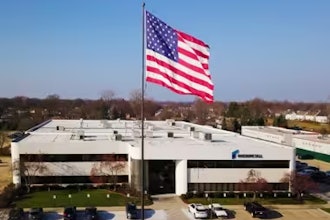This article originally ran in the September 2012 issue of Food Manufacturing.
Dairy processing presents specific food safety challenges not present in other industries. The liquid or moist states of most milk products create hospitable environments for microbiological contaminants to proliferate, and the animal origins of the product make it additionally susceptible to the introduction of those same microbiological contaminants.
Milk and dairy processors use a variety of methods to ensure the safety of their products. Though none of this month’s survey respondents reported being members of the National Conference on Interstate Milk Shipments (NCIMS), 36.4 percent reported their facilities had opted in to Dairy Grade A Voluntary HACCP, a program developed as a collaboration among dairy producers, the FDA and NCIMS. This number is down slightly from January of 2011, when 47.1 percent reported involvement in the program. Dairy processors who do not use Dairy Grade A Voluntary HACCP are still required to participate in HACCP planning under the Food Safety Modernization Act, but may opt for less structured plans, developed in-house and without industry-specific guidance.
Clean-in-place (CIP) systems are an important tool for dairy processors ensuring the safety of their facilities, and the chart at right indicates that a vast majority of processors are utilizing this technology, with 18.2 percent of readers reporting that they plan to increase the amount of CIP equipment in their facilities.
In addition to HACCP and CIP considerations, dairy processors reported the following methods for ensuring food safety in their facilities:
- Have adopted quality assurance testing—100.0%
- Abide by another HACCP plan separate from the one recommended by the FDA for dairy processing facilities—70.0%
- Abide by Pasteurized Milk Ordinance (PMO) Standards—50.0%
- Have automated recall capabilities—40.0%
- Involved with Dairy Grade A Voluntary HACCP Program—36.4%
- Have obtained ISO 22000 certification—20.0%
In addition to these methods, 27.3 percent of survey respondents reported attending at least one training course provided by FDA and NCIMS. Understanding food safety concerns is imperative for dairy processors (like all food manufacturers) because of the regulations — both public and industry — governing food businesses. The chart at left illustrates readers’ reported auditing oversight, with third party auditors, who ensure customer and internal standards, outweighing the presence of any single government entity.
Of the respondents who responded to an open-ended question about their satisfaction with dairy industry regulations, a full 80 percent expressed positive feelings, noting the importance and effectiveness of these regulations for industry and for consumers. About 20 percent expressed dissatisfaction with the regulations, with some calling them “unnecessary.”
Whether to satisfy regulatory or customer demands, dairy industry actors will continue to combine technology and training to create the safest product possible.























